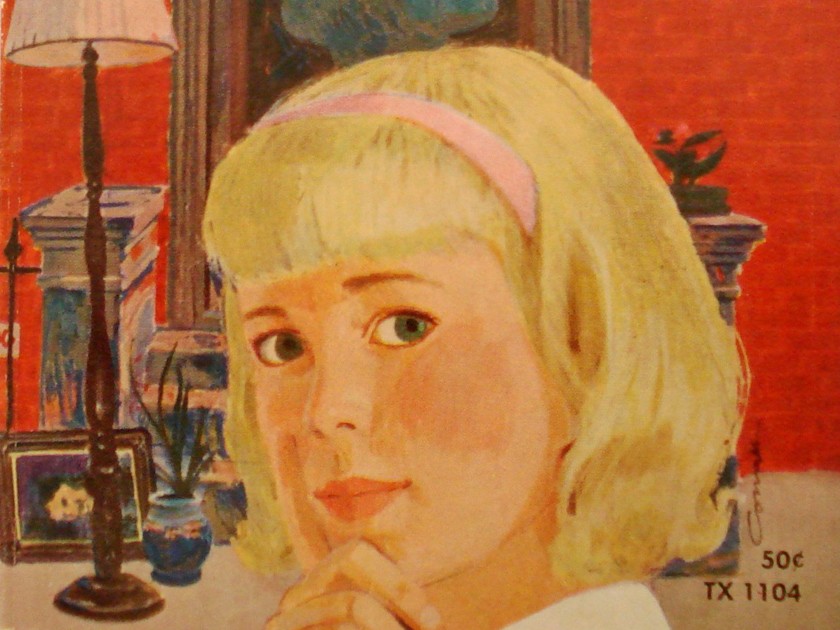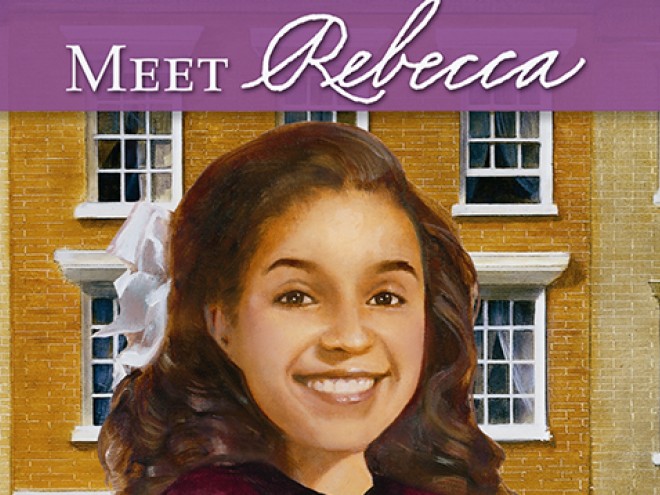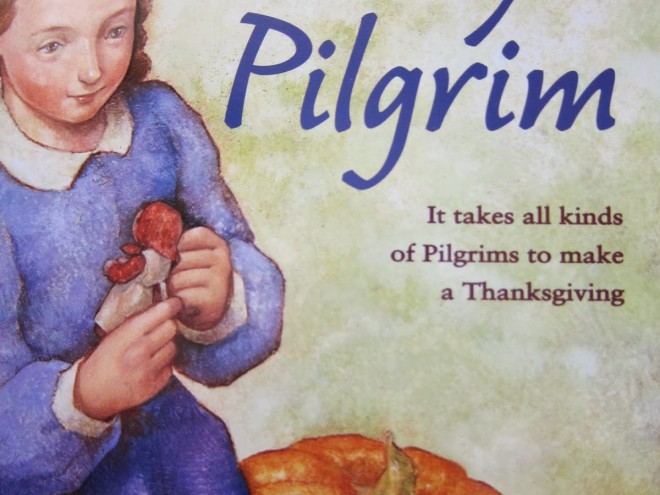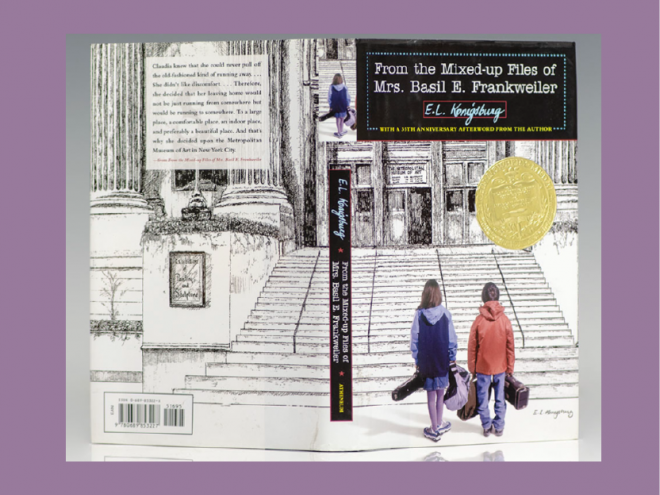
It’s hard to recall a time when Jewish children couldn’t see their experiences reflected in works of fiction — whether in the loving portrayal of recent immigrants and their children Sydney Taylor’s All-of-a-Kind Family series; the conflict and comedy of E. L. Konigsburg’s About the B’nai Bagels; or in Barbara Cohen’s touching take on Thanksgiving for new Americans in Molly’s Pilgrim. It’s easy to forget the pioneers in this field — authors who created opportunities both for Jewish children to see representations of themselves, and, ideally, for non-Jewish readers to become familiar with both the specifically Jewish and the reassuringly universal parts of Jewish life.
Marilyn Sachs (1927−2016; née Stickle) was one such pioneer. Writer, librarian, peace activist, wife, and mother, she devoted her long career to exploring the ordeals and triumphs of children’s lives. Some of those children were Jewish. They were American, European, poor, middle-class, somewhat religious, and decidedly secular. They were victims and survivors, only children and siblings. Sachs examined their lives with empathy, but without sentimentality. Author Zack Rogow, Sachs’s son-in-law, remembers Sachs’s commitment to writing books that did not avoid hard and unpleasant truths. He compares Sachs’s works to the idealized Jewish world of Sydney Taylor’s All-of-a-Kind Family series, “with five sisters whose worst problem seemed to be finding a misplaced library book.” While I interpret Taylor’s work as a far more serious and complex look at Jewish immigrants, his perception of Sachs as a groundbreaker is accurate.
At the time of her death, much of Sachs’s work was long out of print. Yet she wrote more than forty books on an impressive number of themes, including bullying, female body image, and fractured families. Not all of her books feature Jews, but those that do feature characters with a variety of Jewish identities, making her an enduring if understated influence on Jewish authors. In Call Me Ruth (1982), a modern classic for middle-grade readers, Sachs draws on her own family history to reflect on the conflicts between Jewish children born in America and their immigrant parents, as well as on the role of Jews in the labor movement. Women play prominent roles in almost all of her work. Sachs’s books reflect the changing experience of American Jews; she chronicles both the abrupt impact of immigration, and the evolving response of the next generation to new opportunities, as the children of immigrants gradually became fully invested participants in American life.
Sachs’s books reflect the changing experience of American Jews; she chronicles both the abrupt impact of immigration, and the evolving response of the next generation to new opportunities, as the children of immigrants gradually became fully invested participants in American life.
Sachs’s career began with Amy Moves In, a book about ordinary nine-year-old Amy Stern, whose “family was poor, Jewish, lived in the city, and didn’t celebrate any Jewish holidays in the course of the story.” Sachs described her surprise when Amy Moves In was accepted by Doubleday and was published in 1964. She had written it ten years earlier, and it takes place during her Depression-era childhood. Looking back later in her life, Sachs noted, “I had written it in the 1950s when children’s books were pretty much about white, middle-class people who lived in the suburbs and had happy lives. Nobody died, nobody’s parents divorced, and there were no loose ends.” Amy Moves In challenged these norms. Between the time when Ruth and her family struggled as new immigrants, and the era when Amy Stern coped with still present, but less intense, generational conflicts, much had changed in Jewish American life. Sachs’ novels charted that change, documenting with sensitivity the different ways in which children of her mother’s generation and her own managed the tensions which inevitably challenged families, even as they became more rooted in this country.
I remember reading Amy Moves In as a child precisely because Amy’s Jewishness was so unobtrusive.The reader was asked to take it for granted, as the plot did not revolve around holiday observance, bar mitzvah celebrations, or other markers of Jewish life that frequently appeared in Jewish children’s books. (The detailed descriptions of joyous holidays and ritual observances found in Sydney Taylor’s books, for example, are not part of Sachs’s narrative.) Rogow’s dismissive comment that Taylor’s characters “seem to be incessantly lighting candles for Hanukkah or Shabbat” is revealing. Sachs herself emphasized the lack of religious practice in some of her work. Taylor’s characters are not governed by nostalgia; they are religiously observant, so, in fact, they do light candles “incessantly,” or, at least, weekly. Sachs chose to depict different kinds of Jews.
I remember reading Amy Moves In as a child precisely because Amy’s Jewishness was so unobtrusive.
Amy is a working-class girl growing up with her sister, Laura, and her parents, Hannah and Harry Stern, in a neighborhood where Jewish and non-Jewish first- and second-generation Americans live side by side. Neighbors such as Mrs. Greenberg, Herbert Steinman, David Ostrow, and Dorothy Kaplan have instantly recognizable Jewish names. Others have Irish or Italian names. Amy becomes especially close to a shy and gentle Hispanic girl, Rosa Ferrara, who is from a family of more recent immigrants. The characters’ family-centered lives and their common economic struggles seem to unite them more than divide them.
On the rare occasions when Jewish identity does feature explicitly in the tale, it is more a vehicle to emphasize differences between old-world and American culture. The first instance of this secular Jewishness centers on matzoh brie, which her mother and grandmother prepare differently. Sachs has described Amy as a “liar … and crybaby,” and finally her affectionate but determined mother tries to teach her that lies, no matter the motive, are bad. During a visit to her grandparents, Amy warmly says, “Grandma, you make the best matzoh-brei [sic] in the whole world.” She is rewarded with a smile and a caress. But later, when she compliments her mother’s version of the dish with the same superlatives, she receives a serious lecture: “Amy, you told Grandma just a few days ago that you like hers the best. It doesn’t matter whose you like, but I don’t want you to tell lies.”
There is no explanation of matzohas the bread of affliction, no Passover seder, no description of beloved old-world customs continued in America. In fact, Amy admits to herself that “she didn’t particularly care for matzoh brei anyway.” (I remember growing up in a similar kind of family a generation later and thinking that halvah candy — which my immigrant grandfather considered a special treat — tasted like a bar of overly sweetened grease. (Of course, that is the entire point of halvah.) Like Amy, I “lied” by pretending that I liked it.)
According to the American women’s magazines and advice books which Amy’s mother reads as guides to modern childrearing, children must learn to be truthful. Amy, however, likes to make people happy, even if it means stretching the truth. The traditional expectation of reverence for parents and grandparents clashes with contemporary American values, with matzoh brei the casual link between past and future. Sachs could have chosen to frame the dispute over hamburgers or apple pie, but she kept the cultural marker of Jewishness which is only notable for its lack of context. How would a non-Jewish child have responded to the same passage, one which I found reassuringly familiar? Either Sachs assumed that her readers would be Jewish, or she was making a statement about the complete normality of Jewish customs. (A later Scholastic paperback edition of the book included a footnote explaining matzoh brei to the uninitiated.)
The traditional expectation of reverence for parents and grandparents clashes with contemporary American values, with matzoh brei the casual link between past and future.
Call Me Ruth, set around thirty years earlier, is partly the story of Sachs’s own mother and grandmother, and the conflicts that defined their relationship. Indeed, the book is dedicated to Sachs’s mother, “Nellie Stickle, who bridged two worlds, two centuries, (I think), and got sick on the Third Avenue El.” In Amy Moves In, Amy’s mother has the energy and leisure time to encourage her daughter’s progress and success as an American by reading parenting recommendations in modern magazines. In Call Me Ruth, however, Ruth’s mother feels so overwhelmed by her new life in America that she struggles to simply keep her family afloat.
Ruth’s family, unlike Taylor’s girls’, is not intact. The handsome young man whom her mother, Fanny, (then Faigel) had married in Russia becomes desperately ills with tuberculosis, “the tailor’s disease,” and soon dies. Fanny is forced to work in a sweatshop, her once famous sewing skills reduced to producing as much piecework as she can to help her family survive. Sachs does not romanticize the fractured relationship between Ruth, who wants more than anything to embrace American values, and her mother, who is so terrified by modern transportation that she becomes violently ill on the elevated train. (I remember a childhood experience in a big department store, where my father had unthinkingly stepped on an escalator, before realizing that my grandmother would definitely not join him on this crazy contraption. I was amazed that he was able to quickly walk down the ascending escalator.) Ruth’s parents work on the Sabbath, and have no expectation of being exempted on that day. But Jewish identity is more than religion for Ruth’s family — their Yiddish accents, their poverty, their lack of familiarity with social norms, mark them as outsiders.
Public school played a large role in making immigrants and their children into Americans. In Amy Moves In, and in its sequel, Amy and Laura, many of Amy’s teachers have names like Miss Parker and Miss Bennet, marking them as representatives of the English language and American acculturation expected of all students in that era. These teachers play a largely positive role: Mrs. Malucci recognizes and praises Amy’s creativity and intelligence, and even her high-spirited nature. A generation earlier, however, Ruth is subjected to subtle but bigoted cruelty by Miss Baxter, the teacher whom she adores. Sachs exposes the insidious nature of prejudice, rooted in ignorance but empowered by authority, in a way that still rings true today. It is not Jewish religious practice but cultural norms which disgust her: effusiveness, emotion, resistance to immoral economic and social conditions. In modern terms, she is tone policing her: “It’s self-control, Ruth … I know that in some countries people are encouraged to speak up boldly and to show all their feelings. But believe me, dear, and this is for your own good, in this country, people respect good manners, and good manners means self-control.”
There is no easy resolution to the conflict between generations — or between traditional and modern values — in Call Me Ruth. Zack Rogow has noted the strength and power of Sachs’s female characters, but also the realistic nature of their imperfections. Fanny is “a true crusader for justice, but a neglectful mom.” While Ruth comes to admire her mother’s activism, she is still frustrated, even bitter, at the embarrassing contradictions of her mother’s new persona.
Fanny is ‘a true crusader for justice, but a neglectful mom.’ While Ruth comes to admire her mother’s activism, she is still frustrated, even bitter, at the embarrassing contradictions of her mother’s new persona.
The woman who was dedicated to her husband and daughter is now an assertive organizer, in demand at meetings and rallies to promote the cause. Ruth resents her mother’s new indifference to her appearance, her lack of interest in finding a new husband, and her erratic availability to her daughter cause Ruth to resent her, even though Ruth is simultaneously proud of her mother’s prominent role in the community. Ruth admires her mother’s principled activism, but remains embarrassed and unable to reconcile the assertive organizer with the passive maternal figure she had once known.
Throughout her long life, Sachs identified with progressive causes: peace activism, desegregation, literacy. Many of the Jewish characters in her books, whether by their class status, their activism, or their indifference to religious tradition, embody that long and persistent legacy of being Jewish American. Marilyn Sachs challenged young readers to see her Jewish characters for what they were: individuals with imperfect families and uneven relationships, as well as representatives of the culture which informed their lives, whether in small or all-consuming ways. The nuance that she brought to her rich interpretation of the immigrant experience, and of the lives of Jewish Americans already established here, makes her books well worth reading today.
Emily Schneider writes about literature, feminism, and culture for Tablet, The Forward, The Horn Book, and other publications, and writes about children’s books on her blog. She has a Ph.D. in Romance Languages and Literatures.



